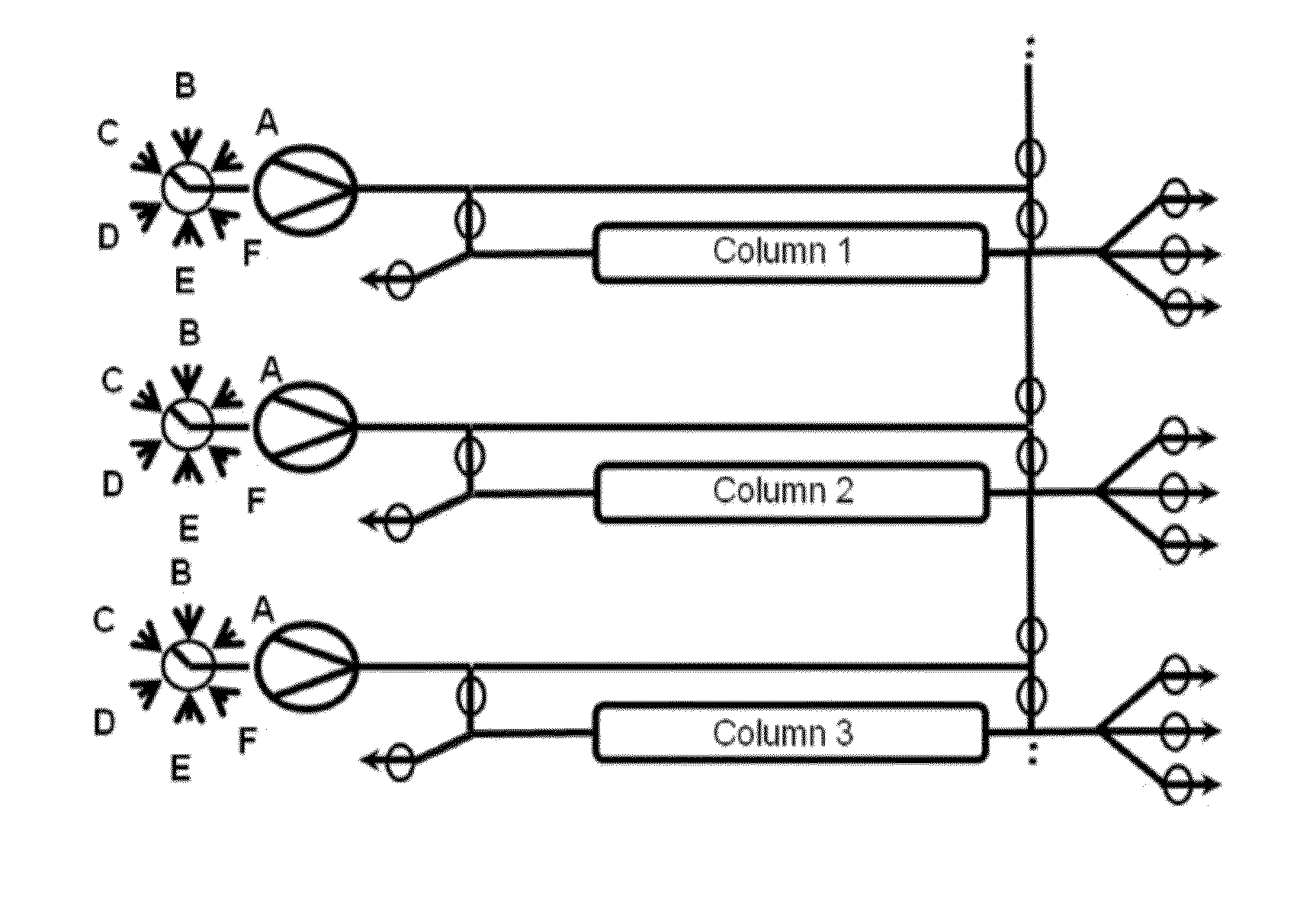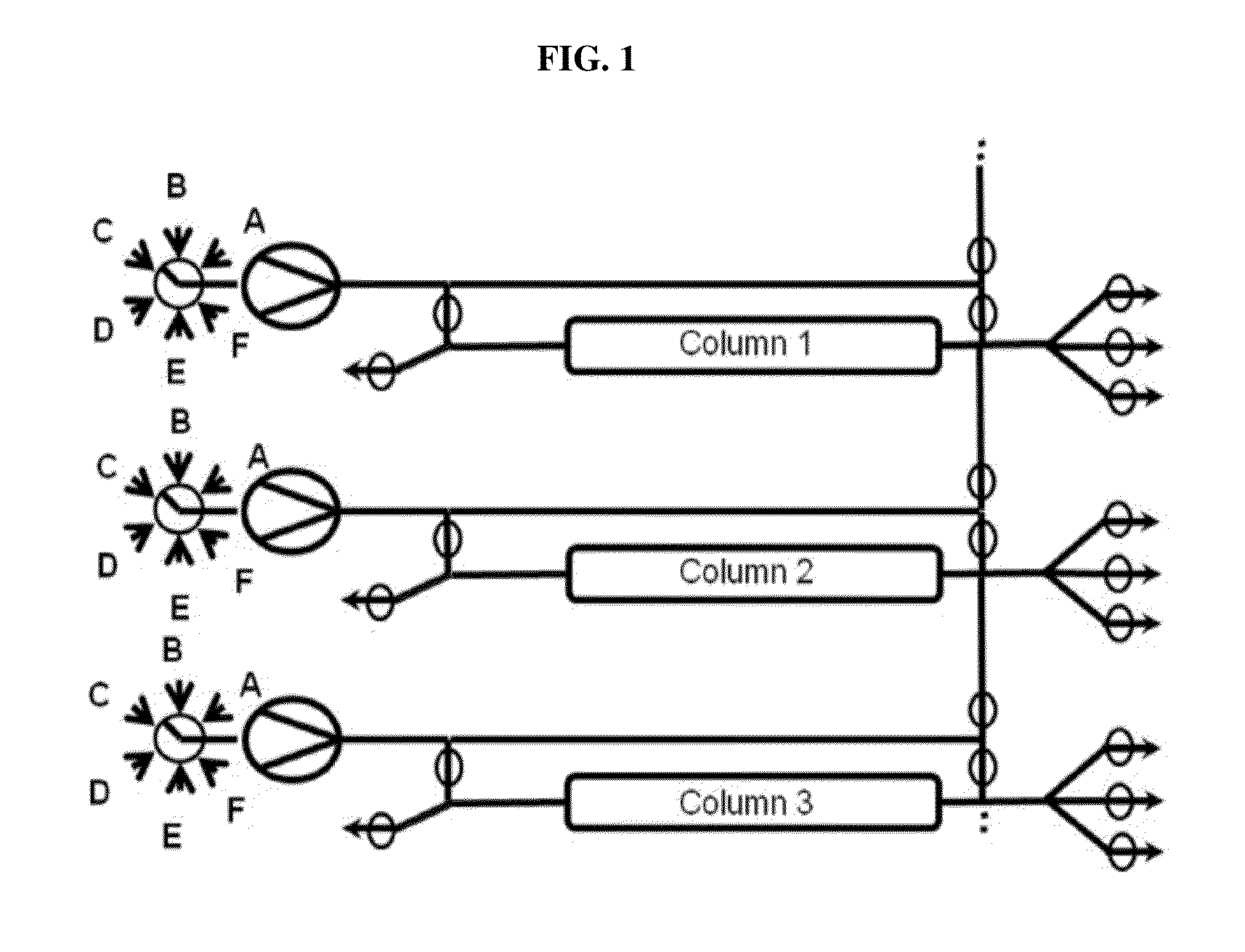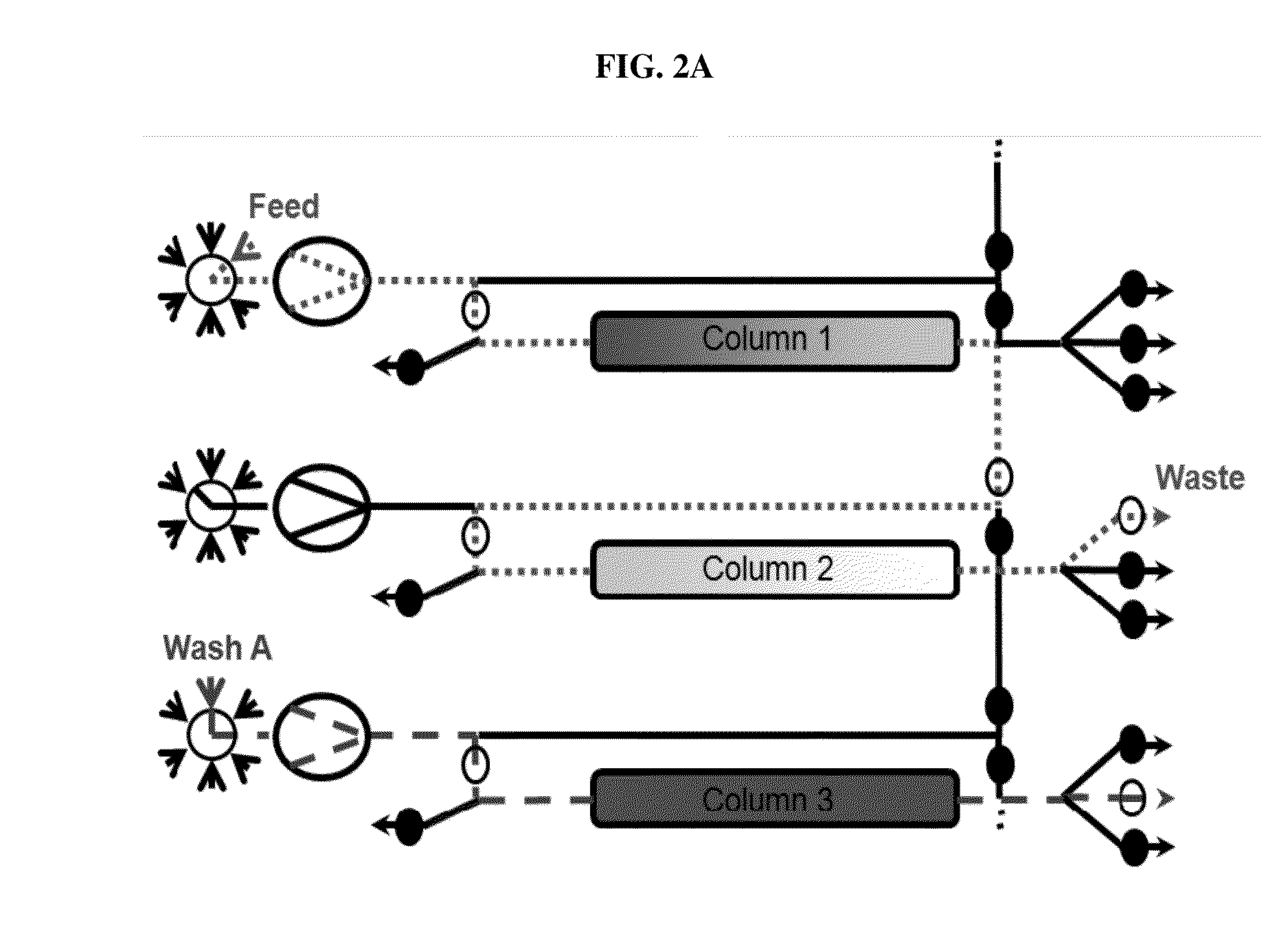Chromatography method
a chromatography and chromatographic separation technology, applied in the separation of components, chemical/physical processes, peptides, etc., can solve the problems of reducing the dynamic binding capacity, affecting the application, and affecting the effect of the chromatographic separation method
- Summary
- Abstract
- Description
- Claims
- Application Information
AI Technical Summary
Benefits of technology
Problems solved by technology
Method used
Image
Examples
example i
[0261]Continuous Purification of mAb-x (1 mg / ml) on PUP for >100 Cycles with Corresponding Data
[0262]The monoclonal antibody mAb-x in cell culture (SP 2 / 0) solution, which had 1 mg / ml monoclonal antibody composing a fraction of 21% of all components in the solution (according to analytical SEC), where HCP amount was 600000 ng / mg antibody (according to immunoenzymetric assay SP 2 / 0), was purified on the ProtA resin (PUP) under the following conditions. Chromatography columns: PUP resin was packed in a 16×55 mm column; the column was then equilibrated with 25 mM PBS buffer pH 7.2 at 33.3 ml / min. In total three columns were packed. To prepare the sample: monoclonal antibody cell culture solution was filtered through a 0.45 μm filter. The solution conductivity was at about 16 mS / cm and pH6.4. All three columns were attached to a continuous chromatographic system, enabling a connection between the first column and the second column, as well as a connection between the second column and t...
example ii
[0266]Following examples were done to explore the potential difference in the binding capacity value dependency on the residence time for the batch and for the described continuous chromatography method. As indicated in FIG. 8, the binding capacity values measured till 1% brake through values for the standard batch operation were decreasing with decreasing residence values resulting in 35 mg / ml in the measured range of >0.2 min residence time. The current example was done on pure mAb-x example and at different initial titers (1 mg / ml and 5 mg / ml).
[0267]Based on these results feedstock examples are given below:
a) Continuous Purification of mAb-y (0.5 mg / ml) on PUP
[0268]The monoclonal antibody mAb-y in cell culture (CHO) solution, which had 0.5 mg / ml monoclonal antibody composing a fraction of 9% of all components in the solution (according to analytical SEC), where HCP amount was 250000 ng / mg antibody (according to immunoenzymetric assay CHO), was purified on the ProtA resin (PUP) un...
example iii
[0288]Other materials can be used in the application as well, such as MabSelect Sure, though it must be taken into account, that the operational conditions are not the same as the shown above for the PUP material. Just as an example MabSelect Sure usually is applied at 500 cm / h and MabSelect Xtra at 300 cm / h. Please see the figure below displaying the difference in the achievable binding capacity for the operation in the batch and in our continuous approach for three different materials (PUP, MabSelect Xtra, MabSelect Sure) and two different mAb titers (1 mg and 5 mg / ml).
[0289]The monoclonal antibody mAb-x in cell culture (SP2 / 0) solution, which had 0.68 mg / ml monoclonal antibody composing a fraction of 10% of all components in the solution (according to analytical SEC), where HCP amount was 450000 ng / mg antibody (according to immunoenzymetric assay SP2 / 0), was purified on the ProtA resin (MabSelect Sure) under the following conditions. Chromatography columns: MabSelect Sure resin w...
PUM
| Property | Measurement | Unit |
|---|---|---|
| pore diameters | aaaaa | aaaaa |
| pore diameters | aaaaa | aaaaa |
| diameter | aaaaa | aaaaa |
Abstract
Description
Claims
Application Information
 Login to View More
Login to View More - R&D
- Intellectual Property
- Life Sciences
- Materials
- Tech Scout
- Unparalleled Data Quality
- Higher Quality Content
- 60% Fewer Hallucinations
Browse by: Latest US Patents, China's latest patents, Technical Efficacy Thesaurus, Application Domain, Technology Topic, Popular Technical Reports.
© 2025 PatSnap. All rights reserved.Legal|Privacy policy|Modern Slavery Act Transparency Statement|Sitemap|About US| Contact US: help@patsnap.com



